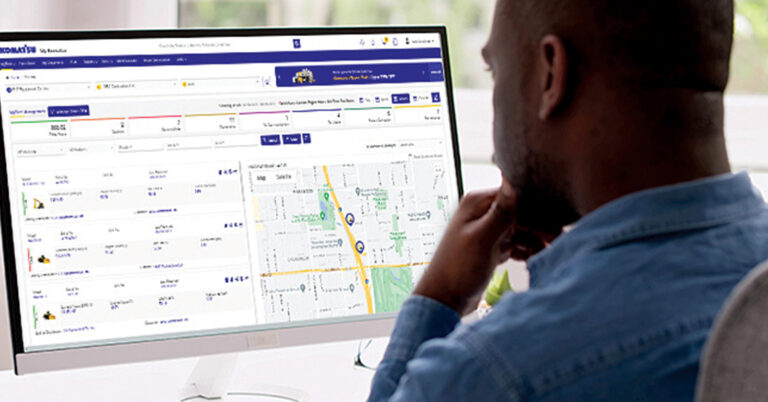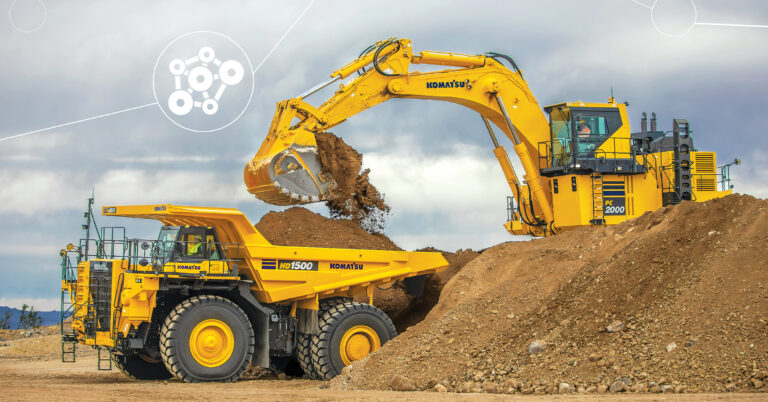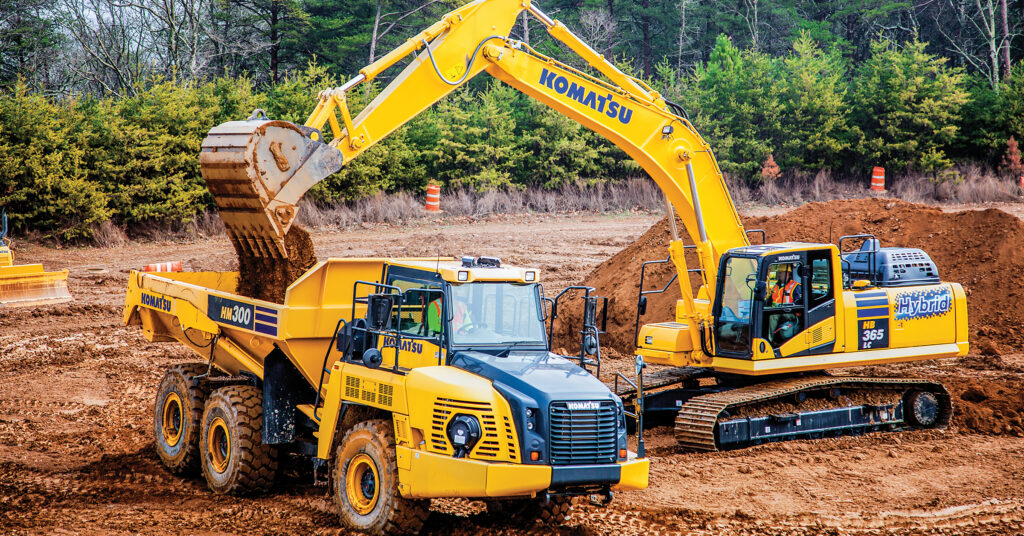
Innovative Technology
Construction equipment electrification: a glimpse into the future of the electric job site
From electric vehicles (EVs) to mining equipment, the shift toward an electric-powered world to reduce carbon emissions — including construction equipment electrification — has already begun.
The Bipartisan Infrastructure Law, which President Joe Biden signed in November of 2021, includes an investment of up to $7.5 billion for EV charging stations to help build out a national network of 500,000 EV chargers.
Additionally, the Bipartisan Infrastructure Law created a joint office between the Departments of Energy and Transportation to collaborate with local communities and provide technical assistance to support the creation and development of EV charging infrastructure.
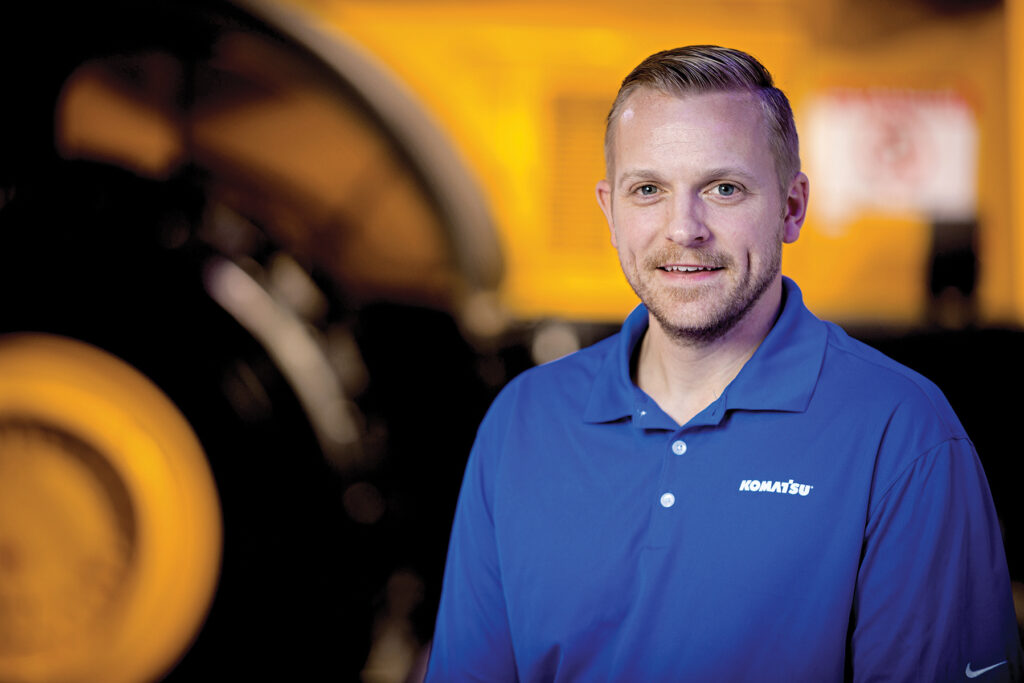
Actions are being taken at the state level as well. The California Air Resources Board announced the Advanced Clean Cars II rule in August of 2022 that codified Governor Gavin Newsom’s climate goals for the state. The rule established that all new cars and light trucks sold in California must be zero-emission vehicles by 2035.
“While electrification is at the forefront of everyone’s mind due to automotive, our equipment on the construction site is often creating that infrastructure for electric automobiles,” remarked Andrew Earing, Director of Tracked Products and Service at Komatsu. “There are challenges, and we have solutions to those challenges that we are exploring, but it’s not going to be a one-size-fits-all solution for the various applications and the various sizes of the products that we provide.”
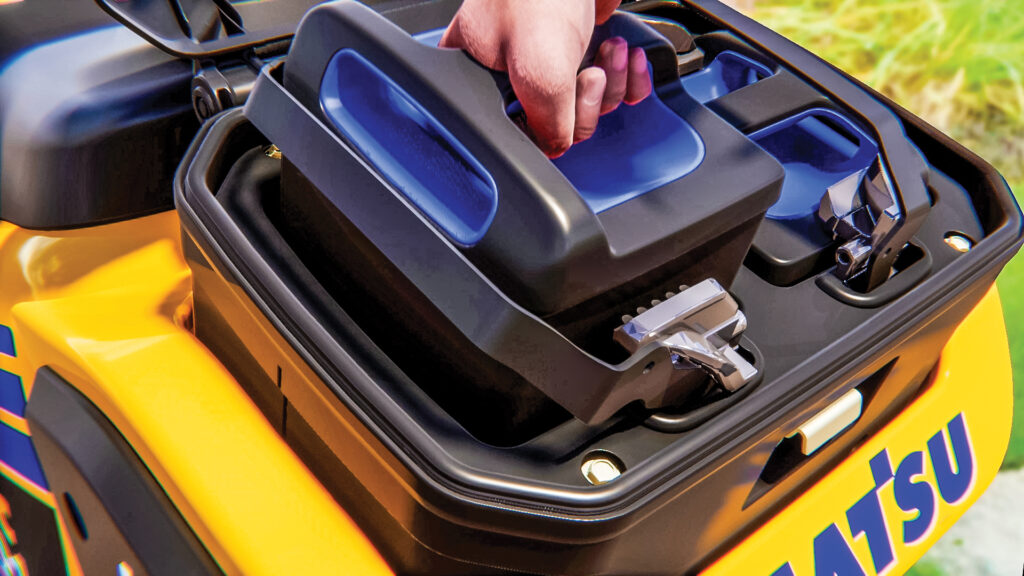
The electric advantage
Komatsu recently showcased a PC210LCE electric excavator and a fully electric compact wheel loader prototype at Bauma 2022, an international trade fair that was held in Munich, Germany, as well as CONEXPO-CON/AGG 2023 in Las Vegas.
In a press release, Seiichi Fuchita, Chief Technology Officer and President of the Development Division at Komatsu, noted that for Komatsu to reach its target of reducing the CO2 emissions of products in use by 50% by 2030 (from 2010 levels), and “to achieve carbon neutrality by the end of 2050, we are looking for promising technologies from suppliers to accelerate our electric machine development.”
“Industries including construction are trending in the direction of carbon neutrality,” added Earing. “We want to be a leader. We are a technology leader when it comes to construction and mining equipment. We feel that electrification is one viable option in the construction space.”
With the PC210LCE, Komatsu created an electric excavator from a popular size class.
“We wanted to introduce the 20-ton size class, because it opens us up to a lot of different operating applications and environments,” explained Earing. “They’re going to be used indoors and outdoors. It’s a very diverse size class, and we wanted to get a much better understanding of all those applications and how they work with electrification.”
In 2023, the PC210LCE will begin to see real work on the job site.
“In North America, we are going to conduct a pilot program where we will work with many of our customers to jointly test not only this machine, but the solutions for our customers’ applications to better understand the benefits to them, and how we can help meet their needs,” said Earing.
Meanwhile, a Komatsu electric wheel loader prototype, created in collaboration with Moog, is currently undergoing further tests to enhance and showcase the advantages of a fully electric machine, such as increasing its operating cycle, adding assist functions, and creating a comfortable environment for the operator. The wheel loader also has sensors to add automation capabilities.
Compared to its combustion predecessors, electric machinery provides two immediate advantages: better air quality and noise reduction.
“With a zero-emissions machine, it allows the flexibility for that piece of equipment to operate indoors without harming the air quality around it,” said Earing. “It can now operate in areas where it may not have been able to before and for longer durations. When you have a traditional emissions vehicle operating indoors, air quality has to be monitored, and sometimes the machine must be shut down for extended periods of time to let emissions dissipate.”
Metropolitan and urban worksites are often accompanied with restrictions for when a contractor can work — in part to reduce noise pollution for the populace.
“That’s why urban environments are another application for electric machines,” Earing continued. “It’s not only due to exhaust emissions, but also because of sound emissions. Going with an electrified machine, which has near zero sound emissions, allows for an extended operating window for our contractors and customers.”
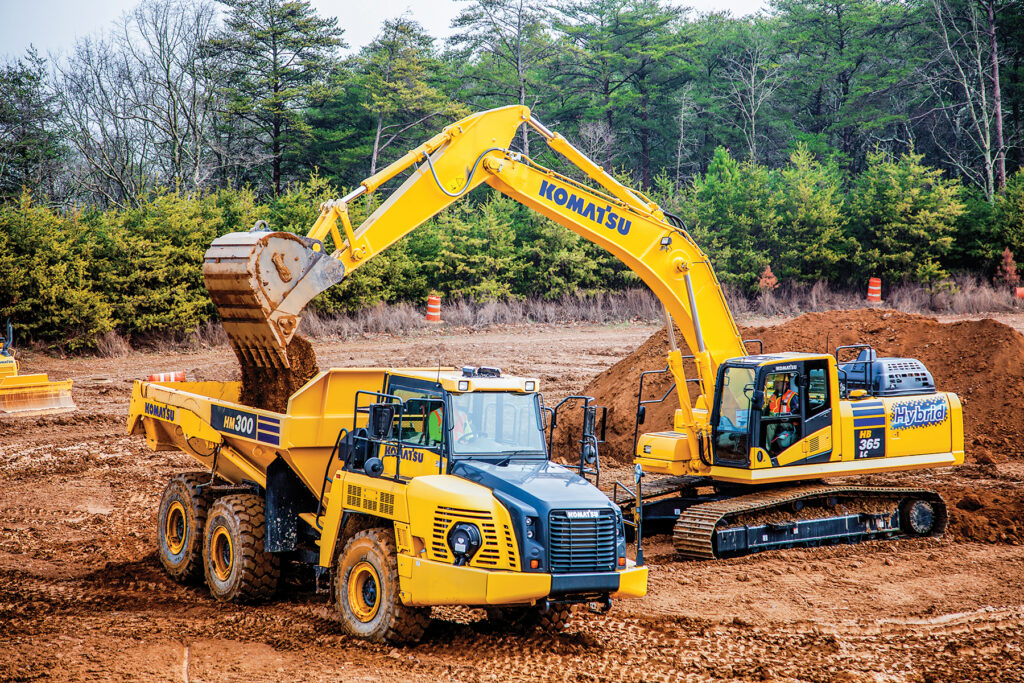
Bridging the gap to construction equipment electrification
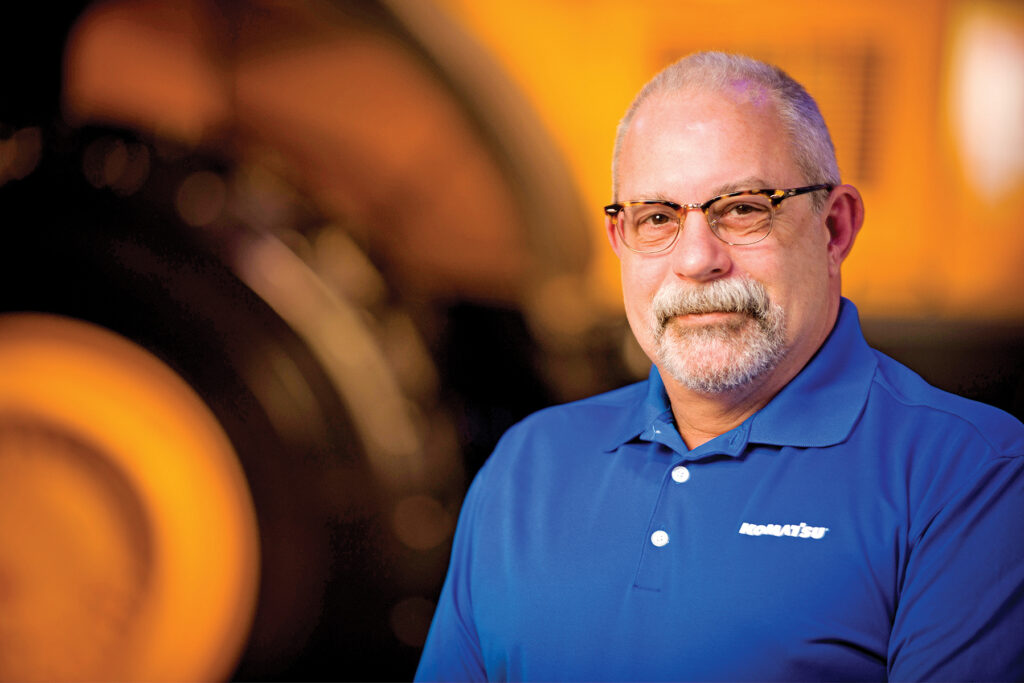
While combustion engines will remain crucial to the development of electric infrastructure, there is currently hybrid machinery available to help the transition between 100% combustion and 100% construction equipment electrification.
Komatsu released its first hybrid excavator in 2008, and its most recent model, the HB365LC-3, entered the market in 2017.
“The HB365LC-3 offers increased fuel efficiency without sacrificing power. A topper on the cake is the added benefit of reduced emissions that lowers your carbon footprint and promotes sustainability,” said Kurt Moncini, Senior Product Manager at Komatsu. “Based on the Environmental Protection Agency’s CO2 formula, the hybrid potentially offers up to a 20% reduction in CO2 emissions compared to the standard PC360LC-11.”
The force behind the excavator’s fuel savings is its electric swing motor, which offers a glimpse into the capabilities of future electric excavators. The electric swing motor captures and regenerates energy as the upper structure slows down and converts it to electric energy.
Moncini explained, “It’s using energy that would normally be wasted and makes it available to do work, contributing to increased efficiency and decreased diesel usage.”
The energy captured during each swing braking cycle is stored in the HB365LC-3’s ultracapacitor. Each time the excavator swings, the capacitor discharges electric power to the electric swing motor.
“A traditional battery requires time for the chemical process that releases electricity to occur,” stated Moncini. “The heavy work nature of construction equipment places a much faster demand on power transfer. The ultracapacitor’s ability to store and discharge energy quickly makes it ideal.”
He added, “Since swing is fully electric, all available engine power can go to the boom, arm and bucket when bringing a loaded bucket out of the ground and over a truck, spoil pile or hopper. This creates a faster cycle time and a very quick, responsive swing.”
In addition to powering the swing motor, the ultracapacitor sends electric energy to the engine via the motor-generator. This energy is used to accelerate the engine from an ultra-low idle speed of 700 revolutions per minute (rpm) and improve hydraulic response.
It is this technology that can likely be applied to future electric excavator models to extend battery life and increase power.
“Komatsu has the technology to not only capture but also supply energy into an electric swing motor, which gives the HB365LC-3 up to an additional 70 horsepower that it can use for efficiency needs or even use for additional performance needs depending on the customer’s application,” said Earing.
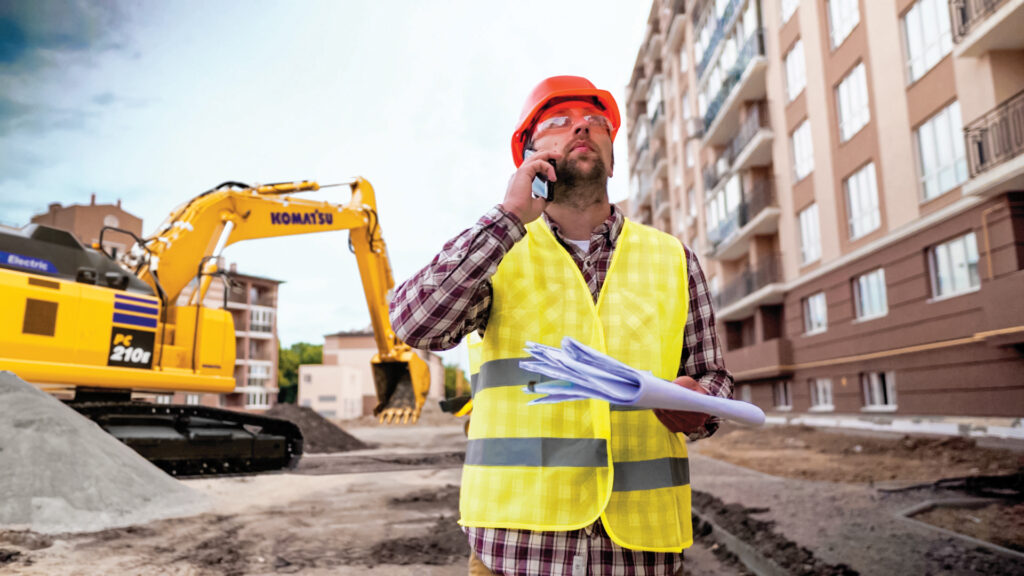
Steps toward carbon neutrality
Complete construction equipment electrification and hybrids are at the forefront of construction’s push toward carbon neutrality, but electrification is just a part of what the industry sees as a solution to meeting carbon goals.
“We’re not just exploring electrification — we’re also exploring other technologies that are out there such as hydrogen fuel cells and clean fuels,” said Earing. “We’re looking at all of these options because we’re making sure that we have the right solution for the right job site and customer application.”
Earing concluded, “In the future, I would say that the trends that we see in carbon neutral machines will depend on the machine application, plus size and weight. With different sizes, there are going to be different technologies that suit those machines.”
Click here for more information on construction equipment electrification.

